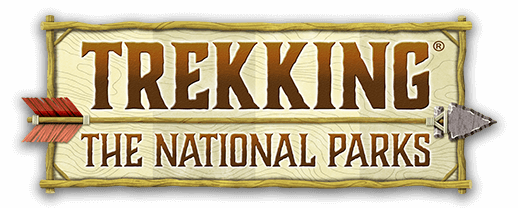Death Valley National Park
Located: California & Nevada - Established: October 31, 1994
“There are hills, rounded, blunt, burned, squeezed up out of chaos, chrome and vermilion painted, aspiring to the snowline,” wrote Mary Hunter Austin, who began exploring and writing about Death Valley back in 1888. Her book, Land of Little Rain is considered a seminal work of environmental writing.
The Park: Like bugs to flame, the extreme heat of Death Valley draws thousands of curious visitors each summer to experience this desert inferno. Summer temperatures frequently exceed 120° F. The highest recorded temperature was a toasty 134° F in July of 1913. In July 2013, Death Valley recorded temperatures of 129° F or higher for five consecutive days. Those visiting loved it!
Why is this area so hot? Two contributing factors – first and foremost, the Sierra Nevada Mountains to the west create a “rain shadow” blocking cooler, wetter weather systems from reaching the desert floor. Secondly, the valley’s low elevation combined with the mountain ranges to the east and west trap hot air and keep it recirculating about the desert floor.
Mt. Whitney in the Sierra Nevada Mountain range stands tall at 14, 491 feet. Badwater Basin in Death Valley is a lowly 282 feet below sea level. Within 100 miles of each other, these two landmarks are the highest and lowest points in the US respectively.
Sand Dunes at Death Valley
Getting there: Death Valley is located on the border of California and Nevada. From Las Vegas, NV, the park’s Furnace Creek Visitor Center is 142 miles via US-95/CA-190. From Olancha,CA located on US-395, the drive to Furnace Creek is 100 miles via CA-190.
When to visit: If you want to experience why they call this park “death valley,” go there in the summer! Temperatures will be extreme at this time of year regularly topping 100°. For a more tolerable experience, the temperatures during November through April will be far more benevolent.
What to do: The 200 square miles of parched salt flats of Badwater Basin sits 282 feet below sea level. Once the bottom of a vast lake, Badwater Basin is now covered with a surreal “Saltscape.” A temporary lake will form whenever rare rains fall; however, a devastating amount of rain flooded Badwater Basin in October 2015. Hopefully, when the newly formed “lake” dries up, it will once again leave the crusty salt patterns seen in the photo below.
Scotty's Castle
Located in the park’s northern reaches, Scotty’s Castle is worth the visit. A tour of this desert mansion will take you back to the life and times of the Roaring 20’s. Please check with park officials as Scotty’s Castle was heavily damaged during the rainstorm of October 2015. The Castle is expected to reopen some time in 2020.
Devil's Golf Course
The “fairways” of the Devil’s Golf Course in the Furnace Creek area are comprised of salt deposits up to 5 feet deep that have been eroded by wind and rain leaving every lie unplayable! There are no electric carts available on this course!
Hiking: There are very few constructed trails within the park. Most hiking is done free form – meaning you make your own path across the desert floor, up canyons or along ridges.
Hiking season is between October and April. Hiking during the summer heat can be deadly! The highest mountain in Death Valley National Park is 11,049 foot Telescope Peak. The vertical drop from the peak to the Badwater Basin is twice the depth of Grand Canyon!
Terry trekking across the salt flats at Badwater Basin. Park visit #33. (Notice her apparel. We didn't visit in August!)
Don’t miss Zabriskie Point at sunrise. In the early morning light, the hillocks of Zabriskie Point resemble large scoops of Neapolitan ice cream. The steeply eroded hills are bone dry and completely devoid of vegetation. The erosion has given them the appearance of gigantic claws of massive creatures crawling out from within the mountains!
Where to stay: There are 9 campgrounds within the park offering over 750 individual campsites. They range in elevation from -196 feet below sea level to 8200’. Four are open year round while 5 are seasonal.
Memorable moments: Walking amongst the salt flats at the lowest elevation in America, noodling about Scotty's Castle, trekking the Devil's Golf Course, hiking the canyons of the park, and getting Terry's Senior Park Pass!
Trivia: Covering 3.4 million acres in California and part of Nevada, Death Valley is the largest National Park in the continental US. This park is referred to by its Native American name as the “land of little rain.”
Banner: Eroded hills around Zabriskie Point
Experience these Check List:
- Stop by the Furnace Creek Visitor Center
- Explore Scotty’s Castle
- Walk about Badwater Basin
- Play around at the Devils Golf Course
- Hike the sand dunes
- Take in the view at Zabriskie Point
Borax mining machinery






